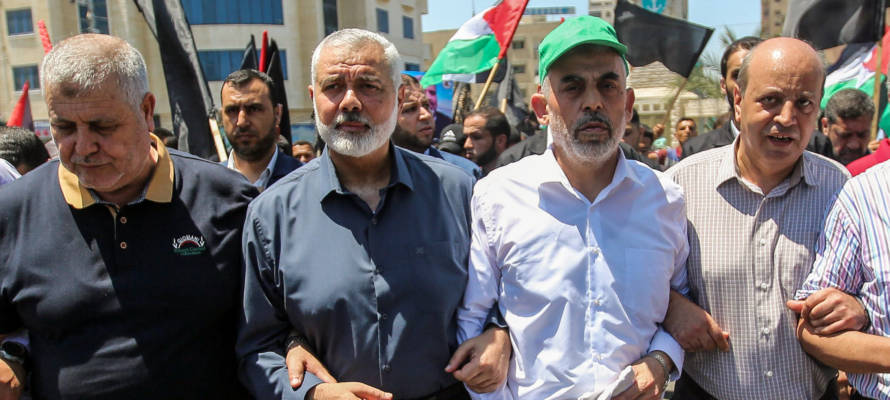The documents moreover showed that Hamas leader Yahya Sinwar held secret meetings with a small syndicate of the terror group’s political and military seniors for a period of more than two years.
By JNS
Hamas pleaded with Iran to join its Oct. 7, 2023 attack months in advance, the New York Times reported on Saturday, citing documents seized by the Israel Defense Forces in Gaza back in January.
According to the report, the deputy head of Hamas’s political bureau, Khalil al-Hayya, informed senior Iranian commander Mohammed Said Izadi of the plot in July 2023, in Lebanon.
Although the Iranians denied any involvement in the Oct. 7 attack, Hamas leadership meetings, obtained in transcribed form and verified by the Times, reveal that al-Hayya asked Izadi to strike sensitive sites in Israel in “the first hour” of the attack.
The documents further reveal that Hamas also intended to convene with Hezbollah’s late leader Hassan Nasrallah, but that the meeting was postponed. It was not clear whether a later meeting was held in person.
According to the recordings, Izadi said that Iran and Hezbollah sanctioned the attack in principle, but that more time was needed “to prepare the environment.”
Hamas was encouraged that its allies would not leave it “exposed,” but concluded that it might launch the attack on its own, the Times reported.
Three factors propelled Hamas’s decision to act alone, based on the recordings:
• Concern over Israel’s development of a new laser defense system.
• Israel’s election of a right-wing government with a growing Israeli presence on the Temple Mount, which “can’t make us be patient.”
• The expanding divisions within Israeli society over issues such as the government’s judicial reform push.
• The desire to quash normalization talks between Jerusalem and Riyadh.
The documents moreover showed that Hamas leader Yahya Sinwar held secret meetings with a small syndicate of the terror group’s political and military seniors for a period of more than two years.
They named the plot “the big project” and deliberately schemed to deceive Israel, conveying the impression that Gaza was focused on “life and economic growth.”
The Hamas leaders further stated that they “must keep the enemy convinced that Hamas in Gaza wants calm.”
The Hamas leadership expressed its relief that several instances of rising Israeli-Palestinian tensions had not developed into confrontations.
Sinwar conveyed his hope that the attack, alongside a broader regional war, would bring about Israel’s “collapse.”
The Times also reported that Hamas initially planned to execute the attack in the fall of 2022, but was delayed, perhaps due to efforts to persuade Iran and Hezbollah to join in.
According to the Times, the recordings were discovered on a computer found by Israeli troops in an underground Hamas command center in Khan Younis, in southern Gaza.
On Oct. 7, thousands of Hamas terrorists, as well as Gazan civilians, invaded Israeli communities in the western Negev, massacring 1,200 individuals, wounding thousands and kidnapping 251 more into the Palestinian enclave.
The attack instigated a war that has expanded into multiple fronts, with Hezbollah, Yemen’s Houthis, Iraqi paramilitary groups and Iran directly attacking the Jewish state.
